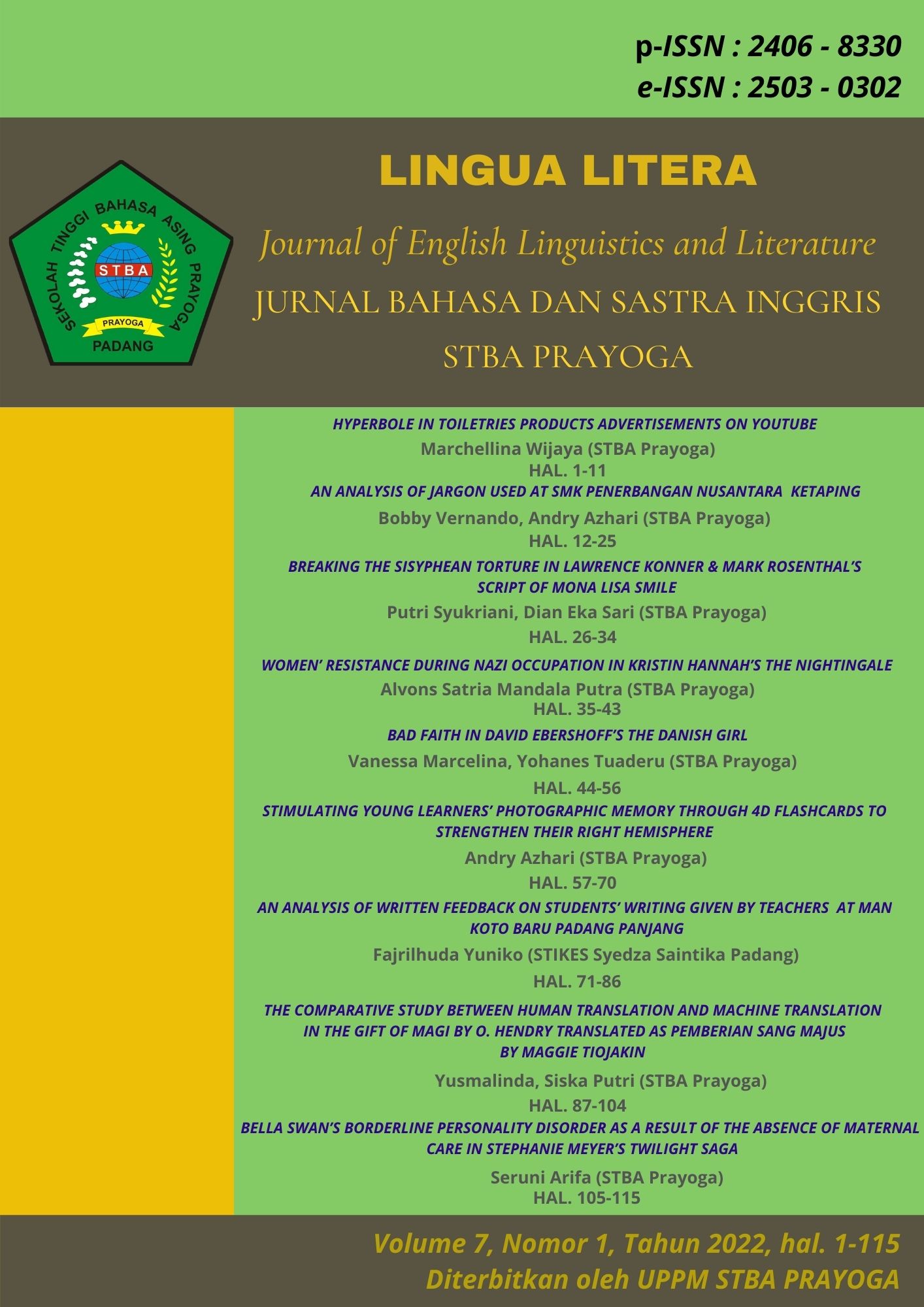BAD FAITH IN DAVID EBERSHOFF’S THE DANISH GIRL
Abstract
Abstract
Different people would have different perspectives on the meaning and purpose of life; some are scared to pursue it, while some are keen enough to explore. Anyhow, they all have to be responsible for the decision they choose. The Danish
Girl, written by David Ebershoff, tells the story of a man and his journey to becoming a woman. As a man who has a feminine tendency, Einar Wegener lives his life as a man in bad faith to avoid unpleasant social interaction. As he gains the
consciousness of his life’s meaning, he uses his freedom to decide to attempt to be authentic. This research is conducted with a philosophical approach utilizing the existentialism theory of Jean-Paul Sartre. Sartre believed that human existence
precedes essence, which means human beings are born without any principle. Consequently, they have to find their meaning and purpose in life. The concept of bad faith is used to describe Einar’s life as a man. His transition to becoming a woman is analyzed with the concepts of authenticity and freedom. This research found that Einar Wegener’s life as a man is a form of bad faith. His authentic self is in the form of a woman named Lili. After containing his feminine side, Einar decided to transform fully into a woman in the act of fulfilling his meaning and purpose in life. Despite his failure at living authentically, he had the full consciousness to understand himself and had attempted to achieve it.








